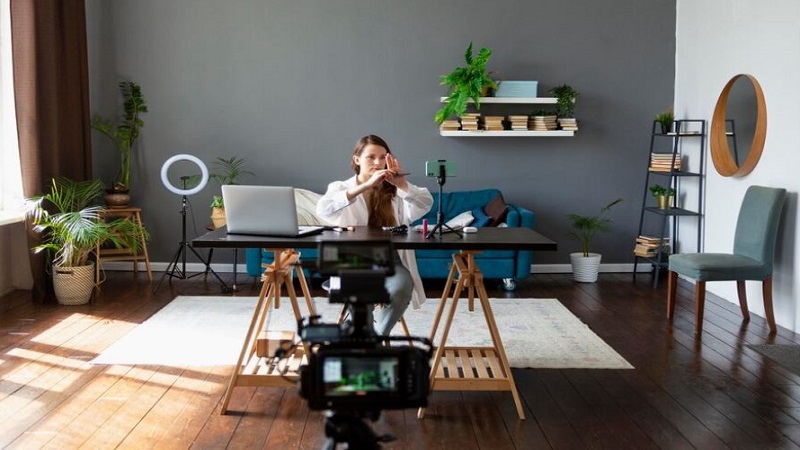In the age of remote working and flexible schedules, creating a home office that balances productivity and comfort is essential. Whether you’re a full-time freelancer or simply need a dedicated space for occasional work-from-home days, a well-designed home office can make all the difference. Here are some key design tips to help you create a home office that enhances both your productivity and comfort.
Choose the Right Location
The first step in designing your home office is selecting the ideal location. Ideally, this should be a quiet area of your home where you can focus without interruptions. If possible, choose a room with plenty of natural light, as it can significantly boost your mood and energy levels. A spare bedroom, a converted attic, or even a well-sized alcove in your living room can serve as a great spot for your office.
If space is limited, consider using a corner of your bedroom or living area. The key is to carve out a space that is distinct and dedicated solely to work, helping you mentally switch from home mode to work mode.
Invest in a Comfortable Chair
Comfort is crucial when setting up a home office, especially if you spend long hours at your desk. Investing in a high-quality, ergonomic chair is one of the best decisions you can make. Look for a chair that supports your lower back, encourages good posture, and is adjustable to suit your height and the height of your desk.
Your chair should allow your feet to rest flat on the floor, with your knees at a 90-degree angle. This setup helps to reduce strain on your back and prevents discomfort during extended periods of sitting.
Select the Perfect Desk
Your desk is the centrepiece of your home office, so it’s essential to choose one that meets your needs. The size of your desk will depend on the space available and the type of work you do. If you require multiple monitors or need space for documents, opt for a larger desk. On the other hand, if you only need space for a laptop and a few essentials, a smaller desk will suffice.
When selecting a desk, consider its height and your chair’s height to ensure that your arms can rest comfortably on the table top while you work. The height should allow your elbows to be at a 90-degree angle, with your forearms parallel to the ground.
Organise with Storage Solutions
A cluttered workspace can be a major distraction, so incorporating effective storage solutions is vital. Depending on your needs, you might opt for shelves, filing cabinets, or desk organisers. Floating shelves can be a great way to store books, files, or decorative items without taking up valuable floor space.
For smaller items like pens, paper clips, and cables, consider using drawer organisers or desk trays. Keeping your desk tidy not only improves your focus but also creates a more aesthetically pleasing environment.
Lighting Matters
Good lighting is essential for a productive home office. Natural light is ideal, so position your desk near a window if possible. However, you should also incorporate other light sources, such as a desk lamp or overhead lighting, to ensure that your workspace is well-lit throughout the day.
Avoid harsh, direct lighting that can cause glare on your computer screen. Instead, opt for soft, diffused lighting that reduces eye strain. Adjustable desk lamps with dimming features can be particularly useful for tailoring the light to your needs.
Personalise Your Space
Your home office should be a reflection of your personality and taste. Adding personal touches, such as artwork, plants, or photographs, can make your workspace more inviting and enjoyable. Plants, in particular, are a great addition as they improve air quality and add a touch of nature to your office.
Consider incorporating colours that inspire and motivate you. While neutral tones can create a calm environment, adding pops of colour through accessories or wall art can energise the space.
Ensure Proper Technology Setup
A well-functioning home office requires the right technology. Ensure that you have a reliable internet connection, as well as the necessary hardware and software for your work. A wireless keyboard and mouse can help reduce cable clutter, while a laptop stand can elevate your screen to eye level, reducing neck strain.
If you frequently have video calls, consider the backdrop of your office. A tidy, professional background, perhaps with a bookshelf or a piece of art, can create a more polished appearance on camera.
Incorporate Flexibility
Finally, a flexible workspace can enhance both comfort and productivity. Consider incorporating a sit-stand desk or a height-adjustable table top, which allows you to alternate between sitting and standing throughout the day. This not only improves circulation but also reduces the risk of discomfort associated with prolonged sitting.
You might also include a comfortable armchair or a small sofa for reading or brainstorming sessions, offering a change of scenery within your office.
Conclusion
Creating the perfect home office is all about balancing productivity with comfort. By carefully considering your location, furniture, lighting, and personal touches, you can design a space that not only meets your work needs but also provides a pleasant environment in which to spend your day. Remember, your home office should be a space where you feel inspired, focused, and at ease.
